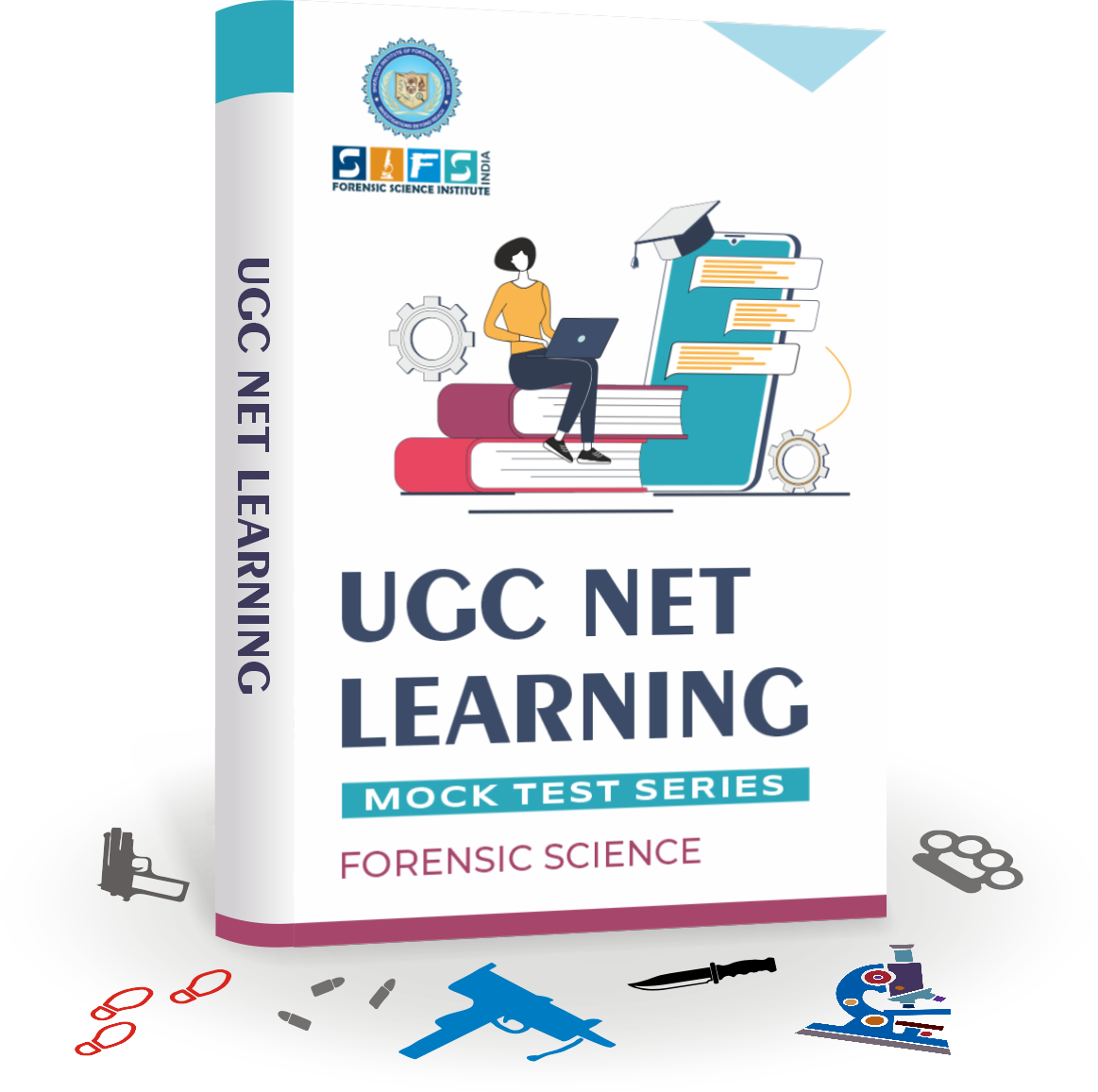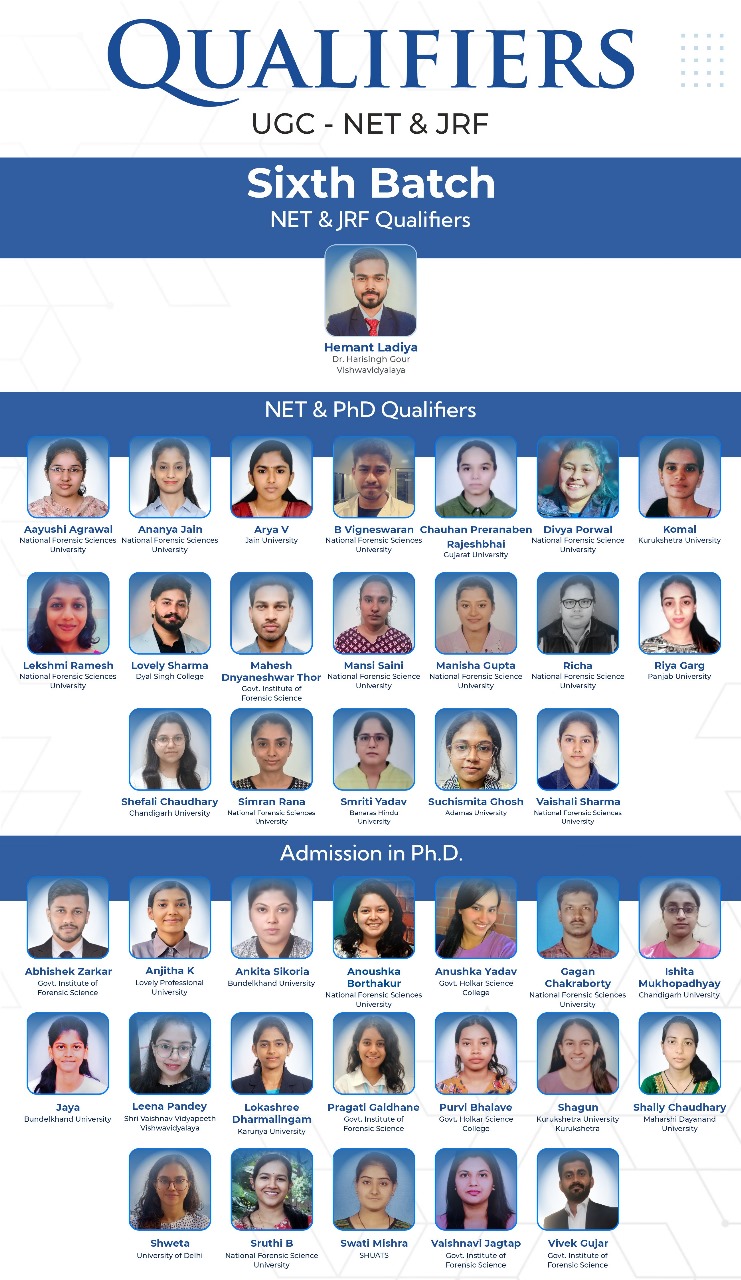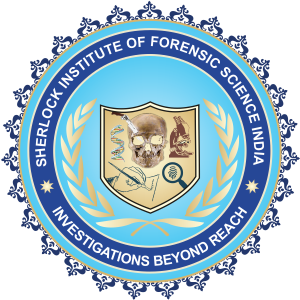I wish to express my heartfelt gratitude to the faculty of the UGC NET Learning Program. Their guidance and unwavering efforts has helped me alot in making this achievement possible.
Qualified NET, June 2021

The UGC NET Learning Mock Test Series is an initiative of Sherlock Institute of Forensic Science (SIFS India).
The program is specifically designed for UGC NET aspirants to help them gain a competitive advantage over peers and to enhance their chances of success on their initial attempt itself.
The mock test series aligns with the UGC NET syllabus, with particular emphasis on the previous 10-years question papers of the UGC NET exams.
So, even if you are a first-time test taker or have previously attempted the exam, this mock test practice will help everyone to understand basic concept, identify their past mistakes, and correct them effectively.
Enrolling in this program offers several benefits to UGC NET aspirants, like:
Exam Pattern Understanding: With a focus on past-year exam papers and trends, you will have a clear concept of how to prepare for the exam to excel, which will at the same time boost your confidence.
Time Management: Mock Test Series help candidates to practice the time management, which will boost the confidence.
By enrolling in this mock test series, you will be equipped with the knowledge, strategy, and resources required to clear the UGC NET exam in your upcoming attempt, leading to academic success and professional growth.
Fee
1770 INR (1500 INR + 18% GST)
Scholarship Reward
A. 200% Scholarship for all registered students who qualify for JRF
B. 100% Scholarship for Top 5 registered students in present batch who qualify for NET (AP)
C. Awarded with Mock Test Series for all other registered students who qualify for NET (AP) and NET (Ph.D.)
Student will Receive
| Paper I | 10 Unit-wise Test (50 Questions Each) |
| 02 Final Exam (50 Questions Each) | |
| Useful Reference Materials and Recorded Session | |
| Paper II | 40 Practice Test (25 Questions Each) |
| 10 Unit-wise Exam (50 Questions Each) | |
| 02 Final Exam (100 Questions Each) | |
| Useful Reference Materials and All Recorded Sessions |








Unit – I
Unit – II
Unit – III
Unit – IV
Unit – V
Unit – VI
Unit – VII
Unit – VIII
Unit – IX
Unit –X
To enroll, click on the “Register for Course” option available on the right side of the screen, followed by the provided instructions and payment procedure.
Yes, scholarship rewards are available for all the registered students who qualify for NET and JRF.
200% Scholarship for all registered students who qualify for JRF.
100% Scholarship for Top 5 registered students in present batch who qualify for NET (AP).
Awarded with Mock Test Series for all other registered students who qualify for NET (AP) and NET (Ph.D.).
Confirmation email will be sent with your portal credentials to your registered email ID once the payment is verified.
To login, visit the portal at the given link: https://www.sifs.in/student and enter your login credentials, i.e., your username and password shared via email.
You can easily access on mobile or tablet devices. We highly recommend that you use your desktop or laptop and a reliable internet connection for a better view.
Write to us at sifs.ugcnet@gmail.com, call: +91-1147074263, or WhatsApp: +91-7303913002.
Unfortunately, refunds cannot be issued in this Mock Test Series after the enrollment in this course.
To receive the scholarship, you must submit your details, result (PDF format) along with both written and video feedback through our form.
The Angel of Death Case Study
On May 24, 1943, the death camp at Auschwitz, Poland, welcomed a new member. He was Josef Mengele, a 32-year-old doctor who came to be known as The Angel of Death. Later, he became the chief operator of the concentration camp at Auschwitz.
He was a German anthropologist and physician who, since 1937, was associated with the SS, and on the orders of Adolf Hitler, he gained the position of chief doctor in the extermination camps set around Germany. He used to decide the fate of the incoming prisoners. He awarded them either torturous labor or immediate extermination.
As he was in a hurry to advance his medical career, his level of atrocities reached new heights. In lieu of medical treatment, he injected several thousand inmates with substances like petrol, chloroform, etc. to study their chemical effects. He also plucked out the eyes of corpses to study eye pigmentation, along with the dreadful study of twins.
He fled to Latin America by the end of WWII, honestly spent his life as an immigrant, and kept changing his location. His residential details were a mystery, as was his death. In 1979, he died as a result of drowning on a beach in Brazil. He was buried with his name changed to hide his identity.
His corpse was unearthed in 1985. However, due to his decomposition, it was difficult to recognize him. In this case, forensic dentistry came into play, and dental records confirmed his identity.
Ted Bundy Case Study
Ted Bundy is a well-known serial killer. He killed approximately 30 people or more. However, the physical evidence that could prove his crimes was scarce when he was arrested in 1975.
After two years of being convicted for kidnapping, during the time when he was set to face a stand trial for murder in Colorado, he fled to Florida.
In early 1978, he killed three more people there, and he was finally caught in February of the same year. However, this time there was enough physical evidence present that led to his conviction.
Out of all the evidence, the key evidence was a bite mark on the buttocks of victim Lisa Levy. Dental identification confirmed Bundy’s distinctive, crooked, and chipped teeth.
He also got convicted for murdering 12-year-old Kimberly Leach on the basis of fibers found in his van that matched the victim’s clothing. In 1989, Ted Bundy was put to death.
I wish to express my heartfelt gratitude to the faculty of the UGC NET Learning Program. Their guidance and unwavering efforts has helped me alot in making this achievement possible.
Qualified NET, June 2021
I would like to thank Dr. Ranjeet Sir and the team at SIFS India for coming up with such an amazing programme. The programme has helped me a lot with timely revision and doubt clarification. I would highly recommend this course to someone who is looking for proper revision for their preparation.
Qualified JRF, December 2022
This programme helped me a lot in my UGC NET/JRF preparation and because of your amazing team and their guidance i was able to achieve success in this exam. Thank you so much SIFS India for your help. I would like to tell the students who are preparing for UGC NET/ JRF in Forensic Science to choose this programme for their preparation.
Qualified NET, December 2022
SIFS India is such a helpful organisation for forensic aspirants. The sessions provided by them were so helpful for me that i was able to crack the exam with much ease. Throughout the sessions i just practised and improved my mistakes under the guidance of their experiences and knowledgeable faculties. The learning environment was friendly and welcoming. Highly recommended.
Qualified JRF, June 2023
First and Foremost I would like to thank Dr. Ranjeet Singh Sir for providing this opportunity for me to enrol in this program. The curriculum set up by team SIFS India in the program really helped me to prepare for UGC NET/ JRF with much ease. High quality study material and mock tests really helped me build my concepts from ground up and helped me crack this exam. I am so happy for this achievement.
Thank You! Team SIFS India!
Qualified JRF, June 2023
Yes, you can definitely enroll in the mock tests using your smartphone. Our platform is mobile-friendly, and you can access all course materials and mock tests conveniently from your device. This gives you flexibility to prepare for the UGC NET exams anytime and anywhere. If you have any further questions about the enrollment process or need assistance, feel free to reach out.
No, the same test cannot be attempted multiple times. Each mock test is designed to provide a unique assessment experience. Additionally, you cannot download the question paper along with the answers after completing the test. This policy is in place to ensure the integrity and security of the testing process. If you have any further questions or need clarification, feel free to reach out.
Our UGC NET Mock Test Series includes a vast collection of mock tests covering various topics in the syllabus. This ensures that you get enough practice and a well-rounded understanding of all subjects. You will receive 10 unit-wise tests (50 questions each), 2 final exams (50 questions each) for Paper 1 and 40 practice tests (25 questions each), 10 unit-wise tests (50 questions each), 2 final exams (100 questions each) for Paper 2, and reference material for both papers. Demo tests are not provided and the mock tests are availbale in English language only.
Yes, once you enroll in the UGC NET Mock Test Series, you will have 24/7 access to all the tests for 3 months. You can take them at your convenience, allowing you to study and practice whenever it fits your schedule.
The UGC NET Mock Test Series is a set of practice exams designed to simulate the actual UGC NET exam pattern. It helps you familiarize yourself with the exam format (both Paper 1 and 2), manage your time effectively, and identify areas where you need improvement, ultimately boosting your confidence for the real test. All the mock tests are carefully designed by the professionals and align perfectly with the real exam format. Questions are created by considering past trends, latest syllabus, and frequently covered topics along with potential questions that might be asked.
To improve your scores, focus on understanding the concepts rather than just memorizing answers. Analyze your mock test results to identify weak areas, review related materials, and take notes on key topics. Consistent practice and time management during tests will also enhance your performance.
Yes, you can download the PDF versions of the previous 10 question years papers as part of the test series course. It will help you to access the course material offline also. However, you cannot download the practice questions and mock tests for both papers provided by the institute. You can only access them online after logging into the portal.
Once the course and materials has been accessed, you cannot apply for a refund even if you are not satisfied with the course material for the UGC NET Mock Test Series. So it is essential to review all the course details before enrolling to check if they match with your needs.
You will receive detailed feedback that includes your scores and correct answers, along with clear explanations for each question, after you complete each mock test. This feedback will help you understand what you did well and highlight the areas where you might need more practice. By identifying your strengths and weaknesses, you can formulate your study plan more effectively and improve your overall performance in the UGC NET exam.
We understand that not everyone has online payment options activated. Hence, we offer several alternative payment methods to ensure you can easily enroll in our courses. You can make payment through bank transfers, where you can directly deposit the fee into our account. If you prefer, you may also pay through cheque or demand draft, which can be sent to our office. For specific details regarding available payment options, get in touch with our support team for assistance.
Contact by WhatsApp

Hello SIFS INDIA